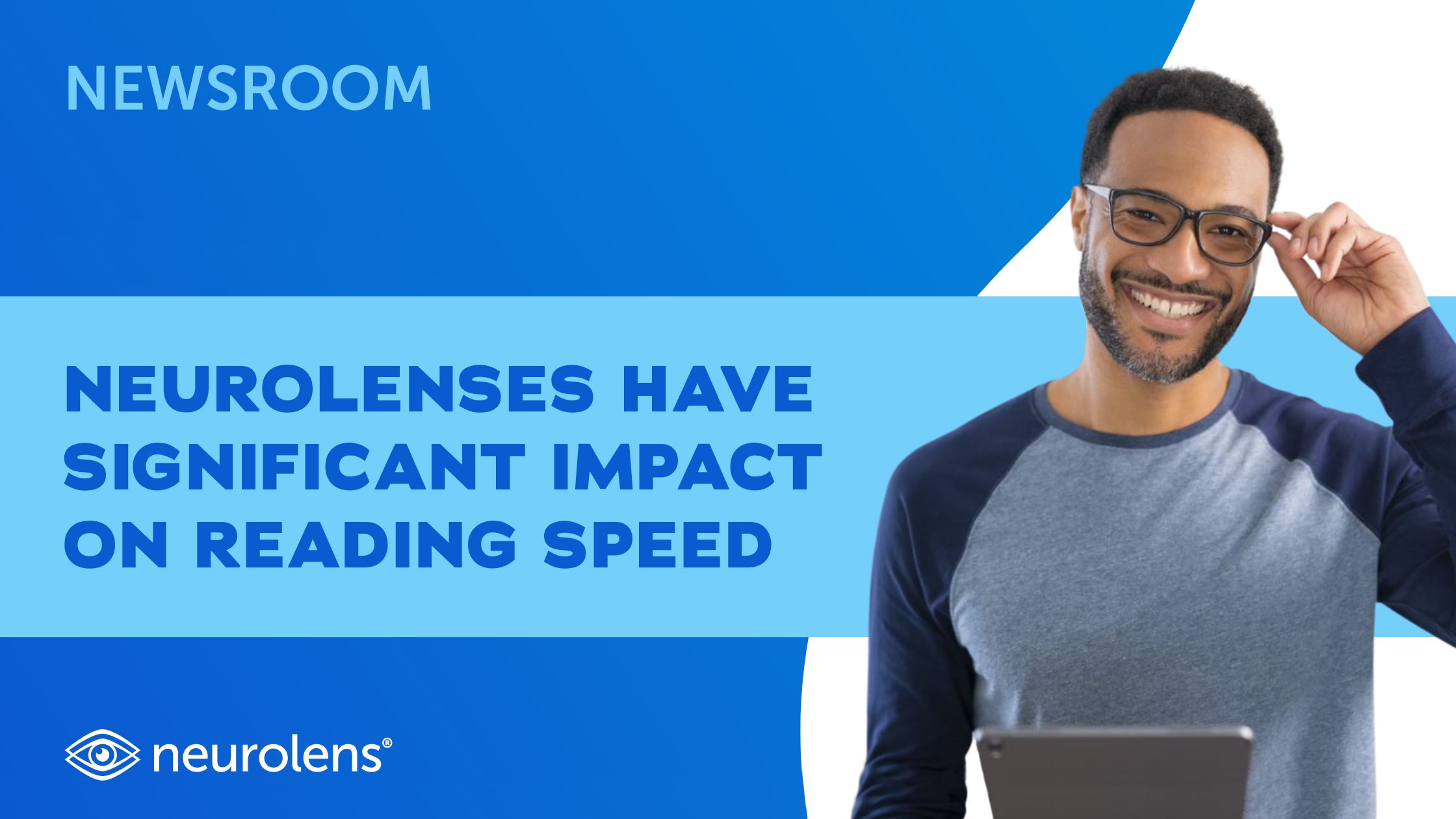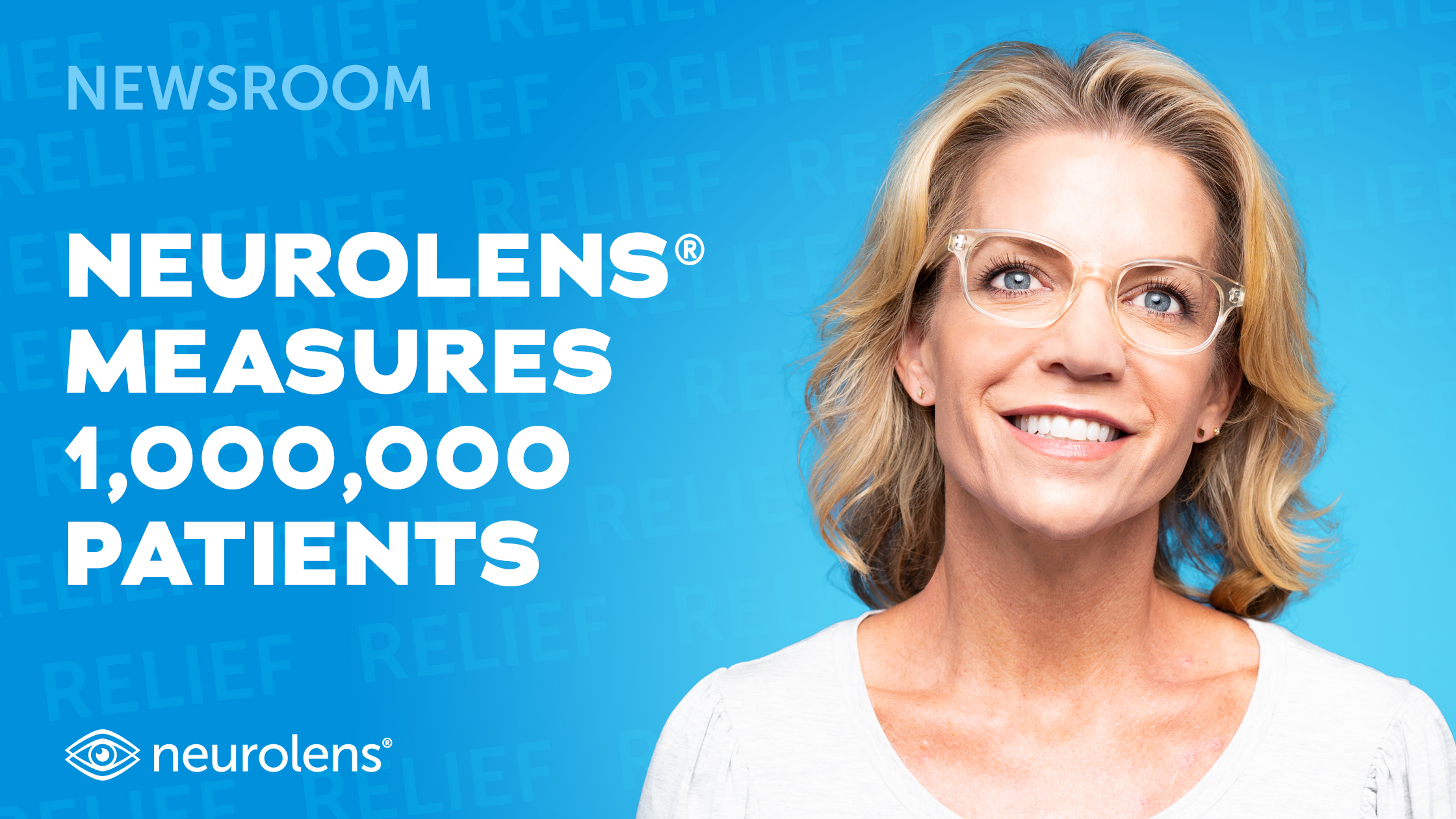
Neurolenses have significant impact on reading speed.
New parallel arm study results have implications for productivity and learning.
Coppell, Texas, August 8, 2022 – As has been demonstrated by many studies, contoured prism has historically shown efficacy in relieving symptoms as a therapeutic offering. And new evidence suggests that there is also an opportunity to expand this technology to an even broader population focused on visual performance and productivity improvement. In a parallel arm study evaluating reading speed at baseline, after seven days of lens wear the mean (±SD) improvement in reading speed with Neurolenses was almost 70% higher than the mean (±SD) improvement in reading speed with other premium lens designs.
“Everything we do at Neurolens is supported by a strong clinical foundation, and we will never stop raising the bar on ourselves in this area,” said Pierre Bertrand, CEO of Neurolens. “These new results have exciting implications for the impact the vision industry can have on productivity, comprehension and learning.”
To test the impact of Neurolens on productivity, a double-masked parallel arm study was designed with two subgroups: Treatment and Control, each consisting of 30 young adults. The Treatment group received a pair of Neurolenses with a prescription based on the practitioner’s Rx using the subject’s best corrected vision. The Control group received a premium single vision lens which yielded the best corrected vision for the individual. Reading speed was assessed initially using the Wilkins Rate of Reading Test (WRRT).
Every individual enrolled in the study wore the randomized study lens assigned to them for 7±2 days. Reading speed was then re-evaluated after the wear-in period. The investigator then calculated the number of words correctly read per minute for each passage. The mean (±SD) improvement in the reading speed for Neurolenses was +20.96 words per minute, and the mean (±SD) improvement in the reading speed for the Control was +12.39 words per minute. ANOVA analysis revealed a statistically significant improvement in the reading speed with Neurolenses compared to the Control lens (F = 4.45; p = 0.03).
“Our visual behavior has obviously changed dramatically over the last century, but one of the most significant changes has been the recent rapid acceleration of near vision utilization that has accompanied a global proliferation of smart phones and tablets,” says Brenda Montecalvo, OD, FCOVD, FAAO, FCSO, renowned author and international speaker in the areas of vision and learning. “I am thrilled that companies like Neurolens are actively trying to push the industry forward and provide proven, effective ways to help our patients live a more productive, fulfilling digital life.”
Click here to read the full parallel arm double blind study on how better binocularity leads to higher productivity.
About Neurolens
Inspired by a breakthrough discovery linking optometry and neurology, Neurolens is unlocking a new dimension of vision care. With patented Contoured Prism technology, Neurolenses are the first and only prescription lenses that go beyond visual acuity to provide visual comfort for the nearly 65% of US adults who complain of headaches, neck/shoulder pain and eyestrain when using digital devices, reading or doing detail work. The Neurolens Contoured Prism design helps the eyes work together comfortably, bringing the eyes into alignment to relieve painful symptoms. Technology from Neurolens is only available to Independent Eye Care Providers.

Neurolens Marketing
Nearly 2/3 of adults experience the painful symptoms of eye misalignment, including chronic headaches, neck pain, eye strain and dry eye sensation. Fortunately, relief is in sight with Neurolenses, which go beyond visual acuity to restore naturally comfortable vision.


.png)
.png)
.png)


